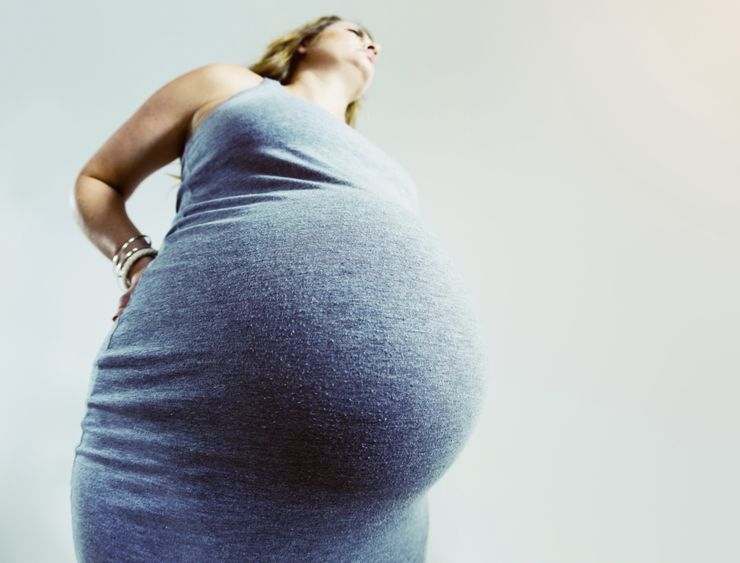
Women who were interviewed in a study considered their pregnant self as temporary and believed that they would re-attain their old self -- or former body weight – eventually, according to Hutson.
SEATTLE, Wash. -- Pregnant women often rely on two identities -- a pregnant self and a non-pregnant self -- to help them navigate the profound psychological and physiological effects that pregnancy has on their body image, according to a Penn State Abington researcher.
"Women use various strategies to maintain a positive body image as they go through the pregnancy process," said David J. Hutson, assistant professor of sociology, Penn State Abington. "One of the strategies that came up multiple times during the interviews is that women maintain two distinct senses of self -- a sense of themselves as not pregnant and a sense of themselves as pregnant."
Women who were interviewed in a study considered their pregnant self as temporary and believed that they would re-attain their old self -- or former body weight – eventually, according to Hutson.
"The interviewees differentiated between baby weight versus body weight," said Hutson. "For them, they were not putting on body weight, they were putting on baby weight -- and this was an important distinction because it allowed them to hold these two different, but concurrent images of themselves."
Nostalgia did not seem to be the reason behind the dual self-images, he added. Older people may look back at their younger physique with a degree of nostalgia, but recognize they will not re-attain that physical state. However, women in the study considered pregnancy weight gain as a short-term condition.
"The notion of returning to not only a pre-pregnancy body weight, but to a self that existed before pregnancy came up regularly in the interviews," said Hutson, who reports his findings today (Aug. 23) at the American Sociological Association's annual meeting in Seattle, Wash.
The participants in the study also said they were often shocked at how the morning sickness and fatigue, especially during the first trimester, knocked them off the diets and exercise routines they planned to keep them healthy throughout their pregnancies.
"All of the women in the study -- except two -- said that the first trimester was the most physically taxing part of the pregnancy," said Hutson. "For many of them, even the pain of giving birth was nothing in comparison to the overwhelming tiredness and nausea of the first trimester. But that's also the moment when women find out they are pregnant and want to eat healthier and exercise, so the physical demands of the first trimester can derail plans for health and fitness."
According to Hutson, the first trimester may be the best time for health care professionals to help prepare women for the possible illness and fatigue of the first months of pregnancy.
"In the discussions I've had with women during the interviews, they say they have had very few conversations with doctors, nurses, midwives, or OB-GYNs about what to expect during the first trimester," said Hutson. "If there is a policy recommendation that might come out of this, it would be that people in health care positions need to advise women about the realities of the first trimester."
While weight gain is associated with negative health and social consequences, pregnant women are usually exempted from most of the negative reactions. However, after pregnancy, that stigmatization may return if women struggle to lose the weight they gained when they were pregnant, he said.
"Pregnancy represents one of those few places in social life where women are allowed to gain weight without much backlash," said Hutson. "But women reported feeling like they faced the same stigmatization immediately after pregnancy."
Hutson conducted in-depth interviews with 20 pregnant and recently pregnant women. Interviews were held at a time and place of the woman's choosing, or over Skype. The interviews of the women, who ranged in ages from 25 to 39 years old, each lasted about 1.5 hours.




